BIRTH OF LORD RAM WAS IN 5114 BC
Happy Ramnavmi
Lord Ram was born in 5114 BC
"Ram was and is for real. He was born on January 10, 5114 BC," Mrs. Saroj Bala, IRS, Commissioner of Income Tax says, calmly, with the assurance of one who has tangible facts.
Taking on the contemporary historical interpretation of Ramayana as a religion-literary text, and Lord Ram as a semi-mythical figure is this unassuming person who zealously devotes her spare time to research in history when she's not playing the tax mandarin.
And she has chosen the unusual combination of astronomy, the Internet, and literary texts to provide us a startling picture of Shri Ram. This might change the way we look at history and religion. We might refuse to begin reading Indian history from that comma, or hyphen called 'Indus Valley.' We might have to stretch the beginnings by a few thousand years because, as Saroj Bala says - Ram was born on January 10, 5114 BC.
Excerpts of an interview with the lady who has the intellectual courage to go beyond the obvious:
The below video shows the details of the funding received by the Archeological Survey of India from the debris of Ayodhya Janma Bhoomi where Babri Masjid stood once.
The below video shows the details of the funding received by the Archeological Survey of India from the debris of Ayodhya Janma Bhoomi where Babri Masjid stood once.
What got it all started...
As an amateur historian, I've always been interested in Indian culture and heritage. I am proud that we're Indians and the products of one of the oldest civilizations However, British rule changed us; we developed a sense of being somehow inferior.
But I could never reconcile to theories like the theory of the Aryan invasion of India in 1500 BC. That would make Indian civilization only 3,500 years old and if you choose archaeology to dig beyond 7,000 years, you'd have to dig more than 60 meters - something not being done in India as yet. So, archaeology is not the only answer. There's a lot of objective research of another kind that needs to be carried out in earnest.
So, how can we say Ram was born on January 10, 5114 B.C..., my colleague Pushkar Bhatnagar of the Indian Revenue Service is the real originator of this theory. He acquired a software named Planetarium, used to predict planetary movements and configurations.
Below is the video of Ashoka Vatika in Lanka where Shree Sita maa was kept captivated during her abduction by Ravana.
By entering in this software, precise details of planetary positions vis-à-vis zodiac constellations described by Maharishi Valmiki in the Valmiki Ramayan, it is possible to determine important dates starting from Shri Ram's birth-date to the date of his return to Ayodhya.
More than just Ram's date of birth...
The results have not just thrown up Shri Ram's date of birth; it has actually traced the entire sequence of incidents throughout Ramayan.
Pushkar Bhatnagar starts with tracing Ram's birth. Then he moves ahead in the narrative. Valmiki Ramayan states Ram was 25-years-old when he went to exile. When the configuration of planets described at this point is fed into the software, the date thrown up matches perfectly with Ram's age at that juncture of his life - 25 years.
Again in the 13th year of Ram's exile, during a war with Khar and Dushan, Valmiki describes a solar eclipse. The software proves that on that given day there was indeed a solar eclipse (with Mars in the middle). This solar eclipse and the particular configuration of planets could be seen from Panchavati (longitude and latitude plainly shown in the software).
Hanuman Saw 8 Constellations while flying to Lanka in the Sunderkand, when Valmiki describes Hanuman crossing the sea and returning from Lanka to Rameshwaram, he gives details of 8 constellations. Usually, one can see not more than 6 constellations at a given point in time. But since Hanuman was flying across, and it must have taken him approximately 4 hrs to get there, he could see 8 constellations - in two hours one constellation would have moved out of sight and another become visible. So, in a period of 4 hrs, he saw 8 constellations!
Below is the video where so many proofs are assembled which may help to understand how practical and real Ramayana was.
Historicising Shri Ram. Man or God...
After researching on Shri Ram, I do believe he's a man who walked the earth in flesh and blood. There is an essential difference between the Valmiki Ramayana and the Tulsi Ramayana. Tulsidas was a devotee who looked up to Ram, but Valmiki was a contemporary. Valmiki has written Ram's life history, as a biographer does - he's a contemporary of Ram, and this is not very different from what happens all over the world. Kings have always had their life history written.
The submerged bridge... recently, NASA had put pictures on the Internet of a man-made bridge, the ruins of which are submerged in Palk Strait between Rameshwaram and Sri Lanka. This clearly should be treated as the historical evidence that corroborates its mention in Valmiki Ramayana.
Below is the Satellite photograph of Ram Sethu build by Lord Shriram and his Vanara Sena.
Another photograph of a Submerged portion of Ram Sethu in Palk Strait.
The puzzle of Indian history...
The presence of Ramayana, Mahabharata, and Vedas cannot be explained by the short period between the decline of the Indus valley civilization and the Rig Vedic period. A civilization cannot suddenly burst into advanced writing. one needs to look at various sources of history to re-build it. Especially when looking at ancient history. One needs to excavate, look at literature, ancient texts, astronomy.
Government apathy to archaeological diggings and investigation in this direction... there's been a very strange development in the media and the people of India. We have started seeing ancient India as something equivalent to the word 'Hindu'. The very word Hindu came into circulation only after the advent of Islam in India. In Ramayana and the Vedas, there is no mention of the word 'Hindu'. At the most, there is the only mention of terms like 'Aryavrat' or 'Bharatvarsh', and residents here are called 'Aryans'. For centuries, Christians, Muslims, Sikhs have been living in this country and it's their land as much as it is to a Hindu. Anything that has happened on this land in the past is their common heritage. But, unfortunately, politicians with vested interests have divided the people into artificial religious lines and making it appear that anything related to ancient India was perhaps related to Hinduism, which is not the case and should not be the case.
There has never been any strong will...
It is not that researches have been not taken place. There has been excellent work done by noted historians like Sir Alexander Cunningham and Dr. Lal. Cunningham has written as many as 21 volumes on ancient Indian history. But one needs special permissions to access these texts.
Unfortunately, Cunningham's work that has very important information has not seen the light of the day. Dr. Lal has pictured the ancient city of Dwarka and it can be read in 'The lost city of Dwarka'. He has listed out 1000 artifacts. Only 9 crores needed to be sanctioned by the government in placing a transparent tube to the sea-bed that could allow people to see for themselves the wonder that was Dwarka.
And now people equate the sum total of ancient history to 'a temple or no temple at Ayodhya. Delay in research also because science hadn't arrived... Without the aid of science, it is practically impossible to manually calculate the exact planetary configuration 7,000 years back. It is a science that is going to validate our history and prove that it is much older than 3,500 years.
What would be the implications of your research on society?
I seriously feel that there can only be positive effects of my research. In fact, Indians should seriously re-look how old is our history and culture. This is not the end of the research; it's just the beginning. People should be encouraged to do more in-depth research by all means such as archaeology, dating methods, and oceanography.
Max Mueller had come up with the theory that Aryans had come to India in 1500 B.C. On the Internet, Max Mueller Foundation says that they have re-looked at this theory and are of the opinion that this theory is no longer valid because Indian history is much older than that period. It's just that people have to open up their minds and find out the answers for themselves.
As briefed bySUNIT BEZBAROOWA & ARVIND JOSHI
TIMES-NEWS NETWORK SATURDAY,
NOVEMBER 08, 2003 02:12:42 AM
Lord Rama: Fact or Fiction
By Stephen Knapp
As of late, in the year 2007, the idea of whether Lord Rama exists or not has been called into question, by no less than some of the politicians in India. So it is a wonder how such persons can be accepted as leaders of the people of India who should be concerned with preserving and protecting the culture of the country. Obviously, they are neither concerned nor aware of the depths of information that can be found in support of the traditions for which India is especially known. Or, they are really attempting to dismantle or destroy the authority of the timeless nature of the civilization of the country.
In regard to Lord Rama, the point about ancient history is that the further you go back in time, the fewer references you can use that actually refer to the incident in history. There may be many commentaries, but few quotations to the actual events.
However, when it comes to the Ramayana and the history of Lord Rama, there have been numerous authors who have accepted the Ramayana as a history of ancient events. For example, the first Governor-General of India, Sri Rajaji, wrote on the Ramayana and called it history, as also did the English Indologist, Sir William Jones. Various other western authors have made a study of the culture and history of the Ramayana, such as Philip Lutgendorf in his book Rama’s Story in Shiva’s City, California University; Joe Burkhalter Flueckiger and Laurie Sears in The Boundaries of Traditional Ramayana and Mahabharata Performances in South and Southeast Asia, University of Michigan, Ann Arbor; W. L. Smith on Ramayan Traditions in Eastern India, University of Stockholm, and others.
There are also numerous places that are indicated as the locations where various events happened in reference to the pastimes of Lord Rama and Sita. Thus, they are accepted as historical sites. I have personally visited many of these places, such as Rameswaram, Nasik, Hampi, and others where there are particular locations and sites that are related to the events that took place in the life and adventures of Lord Rama. Many people accept these sites as the locations for the events described in the Ramayana. So how can this be unless there are not some reality behind it?
However, why is there not more archaeological evidence that points towards Rama’s existence? Because such an effort has not been made in India and systematic excavations have never been carried out, says historian Nandita Krishnan. She says that to doubt the existence of Rama is to doubt all literature. There is little archaeological or epigraphic evidence for either Jesus Christ or Prophet Mohammed, who are known only from the Bible and Koran respectively. Does it mean they did not exist? If Rama performs miracles such as liberating Ahalya, the Biblical story of Jesus walking on water, or the Koranic tale of Mohammed flying to heaven on a horse is equally miraculous. Such stories reinforce divinity.
She also describes in summary what areas the events of Lord Rama’s life took place. She explains: “The Ramayana is geographically very correct. Every site on Rama's route is still identifiable and has continuing traditions or temples to commemorate Rama's visit. Around 1000 BC or earlier, no writer had the means to travel around the country inventing a story, fitting it into local folklore, and building temples for greater credibility.
“In 1975 the Archaeological Survey of India (ASI) unearthed fourteen pillar bases of Kasauti stone with Hindu motifs near the mosque at Ayodhya; reports of the excavations are available with the ASI. Rama was born in Ayodhya and married in Mithila, now in Nepal. Not far from Mithila is Sitamarhi, where Sita was found in a furrow, still revered as the Janaki Kund constructed by her father Janaka. Rama and Sita left Mithila for Ayodhya via Lumbini. In 249 BC, Ashoka erected a pillar in Lumbini with an inscription referring to the visits by both Rama and Buddha to Lumbini. Ashoka was much nearer in time to Rama and would be well aware of his facts.
“Rama, Lakshmana, and Sita left Ayodhya and went to Sringaverapura - modern Sringverpur in Uttar Pradesh - where they crossed the River Ganga. They lived on Chitrakoot hill were Bharata and Shatrughna met them and the brothers performed the last rites for their father. Thereafter, the three wandered through Dandakaranya in Central India, described as a land of Rakshasas, obviously tribes inimical to the brothers' habitation of their land. Tribals are still found in these forests. The trio reached Nasik, on the River Godavari, which throbs with sites and events of Rama's sojourn, such as Tapovan where they lived, Ramkund where Rama and Sita used to bathe, Lakshmankund, Lakshmana's bathing area, and several caves in the area associated with their lives in the forest.
“Rama then moved to Panchavati near Bhadrachalam (AP), where Ravana abducted Sita. The dying Jatayu told them of the abduction, so they left in search of Sita. Kishkinda, near Hampi, where Rama first met Sugriva and Hanuman, is a major Ramayana site, where every rock and river is associated with Rama. Anjanadri, near Hospet, was the birthplace of Hanuman (Anjaneya); Sugriva lived in Rishyamukha on the banks of the Pampa (Tungabhadra); Sabari probably also lived in a hermitage there. Rama and the Vanara army left Kishkinda to reach Rameshwaram, where the Vanaras built a bridge to Lanka from Dhanushkodi on Rameshwaram Island to Talaimannar in Sri Lanka. While parts of the bridge - known as Adam's Bridge - are still visible, NASA's satellite has photographed an underwater man-made bridge of shoals in the Palk Straits, connecting Dhanushkodi and Talaimannar. On his return from Sri Lanka, Rama worshiped Shiva at Rameshwaram, where Sita prepared a Linga out of the sand. It is still one of the most sacred sites of Hinduism.
“Sri Lanka also has relics of the Ramayana. There are several caves, such as Ravana Ella Falls, where Ravana is believed to have hidden Sita to prevent Rama from finding her. The Sitai Amman Temple at Numara Eliya is situated near the Ashoka Vana where Ravana once kept her prisoner."
The above video is of 'Ashok Vatika' in Srilanka where Ravina has kept" Shree Sita Mata" under captivity...
In describing the places in Sri Lanka that are associated with Lord Rama and the Ramayana, "Sri Lankan folklore and religious scholars have identified more than 30 places on the island which are associated with the Ramayana. And interestingly enough, people in these places have a strong sense of history and lore, and a strong sense of possession. They are proud of their association with the Hindu epic," explained S. Kalaiselvan, director-general of the Sri Lanka Tourism Development Authority. This is the case, even though 90 percent of the people in the Ramayana-related areas are Sinhalese Buddhists.
According to the Ramayana, Ravana brought Sita to Sri Lanka by a vehicle called 'Pushpaka Vimanam' by the Hindus and 'Dandu Monara Yanthraya' by the Sinhalese Buddhists. According to mythology, this vehicle landed at Werangatota, about 10 km from Mahiyangana, east of the hill station of Nuwara Eliya, in central Sri Lanka. Sita was then taken to Goorulupota, now known as Sitakotuwa, where Ravana's wife, Mandodari, lived. Seetakotuwa is about 10 km from Mahiyangana on the road to Kandy. Sita was housed in a cave at Sita Eliya, on the Colombo-Nuwara Eliya road. There is a temple for her there. She is believed to have bathed in the mountain stream flowing beside the temple.
North of Nuwara Eliya, in Matale district, is Yudhaganapitiya, where the Rama-Ravana battle took place. According to a Sinhalese legend, Dunuwila is the place from where Rama shot the 'Bramshira' arrow that killed Ravana. The Sri Lankan king was chalking out his battle plans in a place called Lakgala when the killer arrow struck him. Lakgala is a rock from the top of which Ravana could see north Sri Lanka clearly. It served as a watchtower following the expectation that Rama would invade the island to rescue his consort. Ravana's body was placed on the rock at Yahangala for his subjects to pay their last respects. Since Ravana was a Brahmin, it was considered a sin to kill him, even in battle. To wash off the sin, Rama performed puja at the Munneswaram temple in Chilaw, 80 km north of Colombo. At Manaweri, north of Chilaw, there is a temple gifted by Rama.
According to another legend from the southern part of Sri Lanka, Sita was actually detained in the mountainous forest area of Rumassala near Galle. When she fell ill, Hanuman wanted to bring some medicinal plants from the Dronagiri mountain in the Himalayan chain to cure her. Since he could not find the plants, he brought the whole mountain and dropped it at Unawatuna, which is near the present Galle harbor. Unawatuna means 'here it fell'. Indeed, the area is known for its medicinal plants.
At Ramboda, in the central highlands, known for its massive waterfalls, a temple for Hanuman has now sprung up as the belief is that he had visited Sita who was incarcerated there. Legend has it that the Koneswaram temple, in the eastern district of Trincomalee, was gifted by Lord Shiva to Ravana, as he was an ardent devotee. In the famous Buddha Vihara at Kelani, near Colombo, there is a representation of Rama handing over captured Sri Lanka to Ravana's brother, Vibheeshana, who sided with him in his conflict with Ravana.
Nandita Krishnan continues to explain the importance of these holy sites, “All the places visited by Rama still retain memories of his visit, as if it happened yesterday. Time, in India, is relative. Some places have commemorative temples; others commemorate the visit in local folklore. But all agree that Rama was going from or to Ayodhya. Why doubt connections when literature, archaeology, and local tradition meet? Why doubt the connection between Adam's Bridge and Rama, when nobody else in Indian history has claimed its construction? Why doubt that Rama traveled through Dandakaranya or Kishkinda, where local non-Vedic tribes still narrate tales of Rama? Why doubt that he was born in and ruled over Ayodhya?
“Rama's memory lives on because of his extraordinary life and his reign, which was obviously a period of great peace and prosperity, making Ramarajya a reference point. People only remember the very good or the very bad. Leftist historians have chosen to rubbish archaeology, literature, and local tradition.”
Nandita Krishnan also adds that “Nobody believed that Homer's Iliad was a true story till Troy was discovered after extensive archaeology. Unfortunately, the sites of the Ramayana and Mahabharata have now been built over many times and it may never be possible to excavate extensively either at Ayodhya or Mathura.”
To further verify this aspect of the history of Lord Rama, Pushkar Bhatnagar concludes that geographical evidence for the epics is abundant. There still exist many places like Rameshwaram, Kishkindha, Kurukshetra, Hastinapura, etc. where the visits of Rama and Krishna are a basic part of local folklore.
Lack of archaeological evidence is no excuse for denying the existence of history, sums up Bhatnagar. "If the buildings of that time over 7000 years ago do not exist today, can we just infer that civilizations and personalities of that time also did not exist?"
In literature, we have the Ramayana and other texts such as the Puranas which also relate and verify the history and existence of Lord Rama. People from many other regions of the world have also accepted the Ramayana as worthy of attention, devotion, and historical evidence. For example, we can see the effects of the Ramayana tradition in many countries that have adopted their own form of the Ramayana and worship of Lord Rama, especially in the countries of Southeast Asia. These include Burma (Myanmar), Cambodia (Capuchia), Thailand, Indonesia, Malaysia, the Philippines, and Vietnam. Other areas can also be found where the influence of the history of Lord Rama is in effect, such as the continent of Africa was once known as Kushadvipa for having been ruled by Kush, one of Lord Rama’s sons.
The other fact is that many millions of people feel the reciprocation from Lord Rama whenever they engage in devotion to Him, or read the Ramayana, or hear the Ramayana in a Katha, or watch a television show or movie about Him, or go to one of the temples dedicated to Him. This cannot be denied or neglected. Just because we have insensitive politicians who cannot perceive this reciprocation does not mean that we all are so spiritually undeveloped. This dedication and reciprocation have spread throughout the world.
There have also been astronomers who have identified the approximate time of the Ramayana by the descriptions of the stars and constellations as given in the Ramayana, or even in the Bhagavata Purana and other texts. Pushkar Bhatnagar, the author of the book Dating the Era of Lord Rama, claims that there is a significant amount of information available to prove that Rama was a historical personality. He says, “Valmiki, who wrote the Ramayana, was a contemporary of Rama. While narrating the events of the epic, he has mentioned the position of the planets at several places.” He explains that by using recent planetary software, it has been possible to verify that these planetary positions actually took place precisely as specified in the Ramayana. These were not just stray events, but the entire sequence of the planetary positions as described by Valmiki at various stages of Rama’s life can be verified today as having taken place.
Bhatnagar goes on to explain: “This information is significant since these configurations do not repeat for lakhs of years and cannot be manipulated or imagined so accurately, without the help of sophisticated software. The inference that one can draw is that someone was present there to witness the actual happening of these configurations, which got recorded in the story of Rama."
Bhatnagar provides the following quote from the Ramayana: “Rama was born on the Navami tithi of Shukla Paksha of Chaitra masa (9th day of the increasing phase of the moon in the lunar month of Chaitra). At that time, the nakshatra was Punarvasu, and Sun, Mars, Saturn, Jupiter, and Venus were in Aries, Capricorn, Libra, Cancer, and Pisces respectively. Lagna was Cancer and Jupiter & Moon were shining together. — Ramayana 1.18.8,9
The conditions can be summarized as follows, according to Bhatnagar:
1. Sun in Aries
2. Saturn in Libra
3. Jupiter in Cancer
4. Venus in Pisces
5. Mars in Capricorn
6. Lunar month of Chaitra
7. 9th day after New Moon (Navami Tithi, Shukla Paksha)
8. Moon near Punarvasu Nakshatra (Pollux star in Gemini constellation)
9. Cancer as Lagna (Cancer constellation rising in the east)
10. Jupiter above the horizon
According to the Planetarium software, it provides the following date: Sri Rama Navami - 10th January 5114 BCE - Birth Day of Rama, Observation at 12.30 p.m.
Bhatnagar continues: “By using powerful planetarium software, I found that the planetary positions mentioned in Ramayana for the date of birth of Lord Ram had occurred in the sky at around 12.30 p.m. of 10th January 5114 BC. It was the ninth day of the Shukla Paksha of Chaitra month too. Moving forward, after 25 years of the birth of Lord Ram, the position of planets in the sky tallies with their description in Ramayana. Again, on the Amavasya (new moon) of the 10th month of the 13th year of exile, the solar eclipse had indeed occurred and the particular arrangement of planets in the sky was visible. ( Date comes to 7th October, 5077 BC). Even the occurrence of subsequent two eclipses also tallies with the respective description in Valmiki Ramayana. (Date of Hanuman’s meeting Sita at Lanka was 12th September, 5076 BC). In this manner, the entire sequence of the planetary positions gets verified and all the dates can be precisely determined.”
Although this provides verification of the existence of Lord Rama according to calculations as given in the Ramayana, some people feel the timing for the day and year of His birth may be different than what the planetarium software indicates. For example, Vedic astrologer Nartaka Gopala Devi dasi points out that "Regarding the calculation of Lord Rama’s birth as 10th of January 5114 BCE - Birth Day of Rama, Observation at 12.30 PM, there are 2 reasons why this cannot be correct. His rising sign, or Lagna, is Cancer. That places Aries in the tenth house, and He has the Sun in Aries. The placement of the Sun in any birth chart will tell the time of day of the birth. Sun in the tenth house means birth at noontime (approx. 11 AM to 2 PM). There are no exceptions to this. (Lord Krishna appeared at midnight, the Sun is in Leo, 4th house for Taurus rising. Birth at 6 PM means 7th house Sun. Birth at sunrise means 1st house Sun.) Also, in Lord Rama’s chart, the Sun is in Aries, and the dates for Sun in Aries are fixed, which means the same each year from April 14th to May 13th. So how did the January 10 date come up?
These two Jyotish corrections are common sense that any Vedic astrologer would immediately see." So there may be a difference in what the planetarium software suggests. This also corroborates why we who follow the Vedic calendar celebrate Lord Rama's appearance in April-May each year. So the traditional date appears accurate.
These two Jyotish corrections are common sense that any Vedic astrologer would immediately see." So there may be a difference in what the planetarium software suggests. This also corroborates why we who follow the Vedic calendar celebrate Lord Rama's appearance in April-May each year. So the traditional date appears accurate.
Furthermore, some people feel that the appearance of Lord Rama took place many thousands or even millions of years earlier, in the Treta-Yuga. For example, the Bhagavata Purana clearly states that Lord Rama became king during Treta yuga (Bhag. 9.10.51). We have been in Kali-yuga for 5000 years. Before this was Dvapara-yuga which lasts 864,000 years. Before that was Treta-Yuga, which lasts over 1,200,000 years. Thus, according to this, the existence of Lord Rama had to have been many thousands of years ago. And if Lord Rama appeared in one of the previous Treta-yugas, it would certainly indicate that Lord Rama appeared several million years ago. And this is exactly what is corroborated in the Vayu Purana.
In the Vayu Purana (70.47-48) [published by Motilal Banarsidass] there is a description of the length of Ravana’s life. It explains that when Ravana’s merit of penance began to decline, he met Lord Rama, the son of Dasarath, in a battle wherein Ravana and his followers were killed in the 24th Treta-yuga. The Roman transliteration of the verse is:
"tretayuge chaturvinshe ravana-stapasah kshaya tramam dasharathim prapya saganah kshayamiyavan"
The same Ramayana that gives the planetary descriptions (on which the above calculation is based) also tells that Lord Rama came in Treta-yuga. The Matsya Purana (47/240,243-246) is another source that also gives more detail of various avatars and says Bhagawan Rama appeared at the end of the 24th Treta-yuga.
There are 1000 Treta-yugas in one day of Brahma, and it is calculated that we are presently in the 28th cycle of the four yugas (called Divya-yugas, which is a cycle of the four yugas, Satya-yuga, Treta-yuga, Dvapara-Yuga, and then Kali-yuga) of Vaivasvata Manu, who is the seventh Manu in the series of 14 Manu rulers who exist in one Kalpa or day of Brahma. Each Manu is considered to live for 71 such Divya-yuga cycles. So, without getting too complicated about things, from the 24th Treta-yuga to the present age of this 28th cycle of Kali-yuga, there is obviously a difference of millions of years when Lord Rama manifested here on earth. This gives the period of Lord Rama approximately 18 million years ago. Furthermore, the planetary positions mentioned in the Ramayana would also have occurred multiple times in history prior to the calculated date. Of course, few people may believe this unless they are already familiar with the vast lengths of time that the Vedic literature deals with.
Nonetheless, maybe there is a further reason why we should accept that Lord Rama appeared millions of years ago. In the Valmiki Ramayana, Sundara-Kanda (or Book 5), Chapter 4, verse 27, [Gita Press, Gorakhpur, India] it explains that when Hanuman first approached Ravana’s palace, he saw the doorways surrounded by horses and chariots, palanquins and aerial cars, beautiful horses and elephants, nay, with four-tusked elephants decked with jewels resembling masses of white clouds.
Elsewhere in the Valmiki Ramayana, Sundara-Kanda (or Book 5), Chapter 27, verses12, an ogress named Trijata has a dream of Lord Rama, which she describes to the other demoniac ogresses upon awakening. In that dream she sees Rama, scion of Raghu, united again with Sita. Sri Rama was mounted on a huge elephant, closely resembling a hill, with four tusks.
The question is how could there be a mention of the elephants with four tusks unless Valmiki and the people of his era were familiar with such creatures? A quick search on the Encarta Encyclopedia will let us know that these four-tusked elephants were known as Mastodontoidea, which are said to have evolved around 38 million years ago and became extinct about 15 million years ago when the shaggy and two tusked Mastodons increased in population. Now there’s something to think about, eh? So this would mean that the specific planetary configuration that is described in the Ramayana and is verified by Pushkar Bhatnagar, may have indeed happened, but at a time millions of years prior to merely 10,000 years ago.
In this way, as we go through the evidence, we can see how Lord Rama was an actual historic personality, as described in the Ramayana and in other Puranic texts. Nonetheless, there will always be those for whom no matter what you present for verification, it will not be enough. Some just won't believe it. Some will, some won't, so what, let's move on. But many in the world already accept the authority of the Ramayana and other Vedic texts for the verification of the existence of Lord Rama.
The following article also further corroborates the authority of the Ramayana and the places where Lord Rama is said to have lived or visited during His pastimes on earth.
Epics, unlike mythologies, are historical narratives and the events depicted in them are actual occurrences in history. Historians of East as well as West have successfully fixed the dates of Rama and Krishna and have also identified the places associated with them. Dismissing the contention that Ramayana is only a literary piece or an allegory woven out of the imagination of a poet, Griffith asks, " How could an Epic so dear in India to the memory of the people, so deeply rooted for many centuries in the minds of all, so propagated and diffused through all the dialects and languages of those regions, which had become the source of many dramas, which are still represented in India, which is itself represented with such magnificence year after year and to such crowds of people in the neighborhood of Ayodhya, a poem which at its very birth was welcomed with such fervor as the legend relates, that the recitation of it by the first wandering rhapsodists, has consecrated and made famous all the places visited by them, and where Rama made a longer or shorter stay, how I ask, could such an Epic have been purely allegorical?". Gorressio thinks that some events must have happened in the distant past the memory of which has so impressed itself indelibly on the fancies of the Hindus that there is no possibility of the story ever dying until some geological alterations of the features of the country come to pass. Partner says that 'the geographical knowledge revealed in the Epic could hardly have been obtained except by actual visit to these places by some persons.' Monnier Williams among the many tributes he pays to the Epic ranks the Ramayana as the beautiful composition that has ever appeared at any period or any country. Swami Vivekananda proclaims, "In fact the Ramayana and the Mahabharata are the encyclopedias of ancient Aryan life and wisdom, portraying an ideal civilization which humanity has to aspire after." Macdonall says, "Probably no work of world literature, secular in its origin has ever produced so profound an influence on the life and thought of a people as the Ramayana." Valmiki, the author of Ramayana, was a contemporary of Rama and in fact, Sita, the wife of Rama, gave birth to Lava and Kusa in the Ashrama of Valmiki. Valmiki's ashrama is shown at a site in Bithoor which is about thirty miles north of Kanpur and one hundred and ten miles off Ayodhya, on the west bank of River Ganges.
Renowned historians have traced on the modern geographical map of India the locations of various places mentioned in the Epic. On the occasion of the, All India Seminar on Ramayanam held at Trivandrum in 1973, Sri V.D. Ramaswami had brought out a book on "Sri Rama Pada Yatra" covering the places visited by Rama during his itineraries, with maps illustrating his trek in the forests. Rama had undertaken two *padayatras* or long walks in his lifetime. The first one was when he along with his brother, Lakshmana, accompanied his Master, Rishi Vishwamitra, into the forest to protect the sacrificial rites conducted by Rishis in the hermitages, from the onslaught of Rakshasas. The second and longest march that Rama undertook was during the Vanavasa to keep up the promise that Dasaratha made to Kaikeyi and to fulfill the wishes of his stepmother that he should go into the forest for fourteen years, leaving the throne to her son, Bharata. In this second *Paada yatra*, Rama was accompanied by his faithful wife, Sita, and brother, Lakshmana. The people of Ayodhya, not willing to leave him, chased his chariot up to the northern bank of River Tamasa (R. Tons). Here, in the night,
Shri Rama gave a slip to the people who were tired and had fallen asleep and reached Sringiberapura on the banks of Ganges, where Guha received him, his wife, and brother. This place is identified as the Singer of modern times. The next morning, Guha got ready a boat for the party to cross the river. Taking leave of Guha, Rama, Seeta, and Lakshmana started their long trek to the south. The spot on which Rama crossed River Yamuna to reach Chitrakoot is Kosum, which Cunningham identifies with the ancient town of Kousambi, capital of Vatsa Desha (the Doab). The modern town of Chitrakoot is situated in the district of Banda which is about five miles from the railway station of Karvi.
Shri Rama gave a slip to the people who were tired and had fallen asleep and reached Sringiberapura on the banks of Ganges, where Guha received him, his wife, and brother. This place is identified as the Singer of modern times. The next morning, Guha got ready a boat for the party to cross the river. Taking leave of Guha, Rama, Seeta, and Lakshmana started their long trek to the south. The spot on which Rama crossed River Yamuna to reach Chitrakoot is Kosum, which Cunningham identifies with the ancient town of Kousambi, capital of Vatsa Desha (the Doab). The modern town of Chitrakoot is situated in the district of Banda which is about five miles from the railway station of Karvi.
The small hill of Chitrakoot is a part of the Binthachal range and is about five hundred feet high. Pilgrims walk around the hill which is never climbed because people believe Rama is still there. Nearby is the town of Sitapur with its numerous bathing ghats dedicated to the memory of Rama, Sita and Lakshmana, and Hanuman. An important factor that lends support to identify the Bundelkhand Hill with Chitrakoota is that the description of the fauna and flora given by Valmiki agrees with what prevails today in the area. Mallinatha identifies Kalidasa's Rama Giri of *Meghadhoota *with ancient Chitrakoot. However, some scholars consider Ram Tek, which is eighteen miles north of Nagpur, as Rama Giri.
Entering Dandakaaranya, Rama reached Panchavati where an abode was set up by Lakshmana for the three to stay and it was where Sita was abducted by Ravana. While some historians identify Panchavati with modern Nasik, there are others who hold the view that it must be the modern Badrachalam in Andhra Pradesh. After a long trek through dense forests in search of Sita, Rama and Lakshmana reached Sabari Ashrama which was located on the west bank of Pampa Saras. The district map of Bellary shows a Pampa Sagar on the north bank of Tungabadra. According to Professor Wilson, there is a Pampas Lake and also a river of the same name North of Tungabadra, the Pampa River starting from the Rishyamooka Hill joins the main river. Sabari received the brothers here. From there the brothers proceeded to Kishkinda. To the west of the town of Bellary on the south bank of Tungabadra is the small village of Hampi where the ancient Kishkinda is placed on general agreement by scholars. Longhurst on Hampi says Pampa Saras or Pampa Tirtha is on the Nizam's side near the village Anegundi. Pampa is said to be the puranic name of River Tungabhadra. Such is the story of the Ramayana that the names of several localities around Hampi are identical with those in the Epic. Griffith also thinks that the semi-civilized state of Kishkinda included a great part of the Deccan.
Rama and Lakshmana accompanied by the Vanara Sena under the leadership of Sugriva and Hanuman marched towards the south and walked through the area now known as Chitaldroog District of Karnataka before reaching the Sahya Parvata or the Western Ghats. Trekking along the eastern slopes of this mountain, they should have crossed the river Kaveri near its source, the Coorg Hills. Rice in the gazetteer of Mysore says, "it is generally believed that Rama crossed the Kaveri west of Srirangapatam near its junction with the River Lakshmana Teertha." From there they reached Mahendragiri from where Hanuman took his leap to Lanka.
Major Forbes in his book titled 'Eleven Years in Ceylon" gives a good account of the various sites in this island whose names are connected with those in the Epic. The three prominent peaks in the Kandyan Hills are identified with the Trikuta Parvata and the barren area above Halaghatta with the gardens of Ravana that were burnt down by Hanuman. Sita Talava, the place where Sita was kept confined, Nikumbha where Indrajit did his penance, the Suvela Parvata, and several other places connected with the Epic are shown and their respective locations appear to agree so closely with what is stated in the Epic.
Dr. Ram Avatar Ji in his book in Hindi titled "Jahan Jahan Ram chalee Jahan" traces the footprints of Lord Rama in the various places that he visited, especially on his trek to the south from Ayodhya to Sri Lanka. At a time when ignoramuses proclaiming themselves as scholars question the very existence of Sri Rama and the bridge, now known as Rama Setu, that he built across the southern ocean to cross over to Sri Lanka from the mainland, a thorough research study of all the places connected to the life and times of Rama is really the need of the hour. The original book in Hindi, embellished with more than two hundred and fourteen photographs of the places of Rama's visit in his travels, has been translated into Kannada by Sri K.S. Nagaraj and its English rendering is now being made available to readers all over the country and abroad. It is hoped that the translation of the book in other regional languages will also come soon. A nation that is proud of its ancient history and heritage will ever survive the onslaughts of time and live forever inspiring posterity.
Extracted from various reliable internet sources by
Sudesh Kumar DJV
Oct 28th, 2007
Indore MP India.
Finally an opinion about this video. I pray humanity rises above religion and realizes their true identity with the supreme power and sink the silly difference in dispute of construction of temple and mosque. May God bless all who are involved in the dispute and give them enough wisdom to understand that Lord Shri Ram and Allah are in real sense SAME practically and spiritually.
Sudesh DJV writes on contemporary subjects in the form of Articles and poems which are in the interest of the Nation in particular and for Mankind in general.


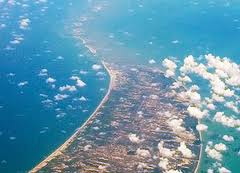

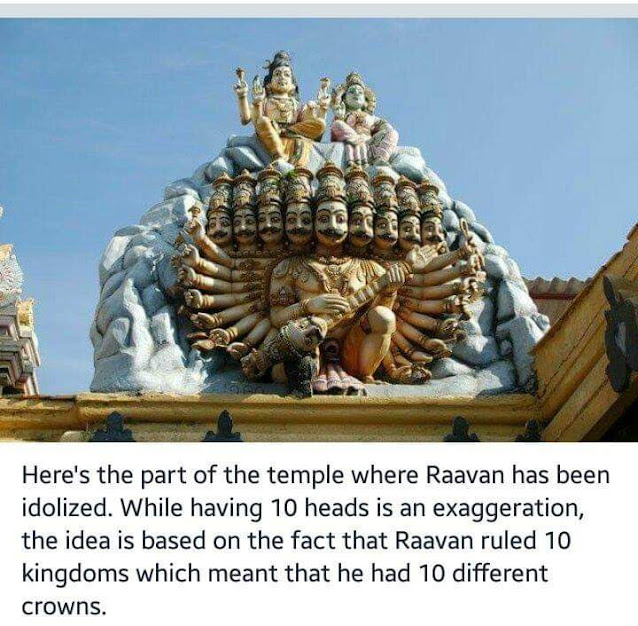
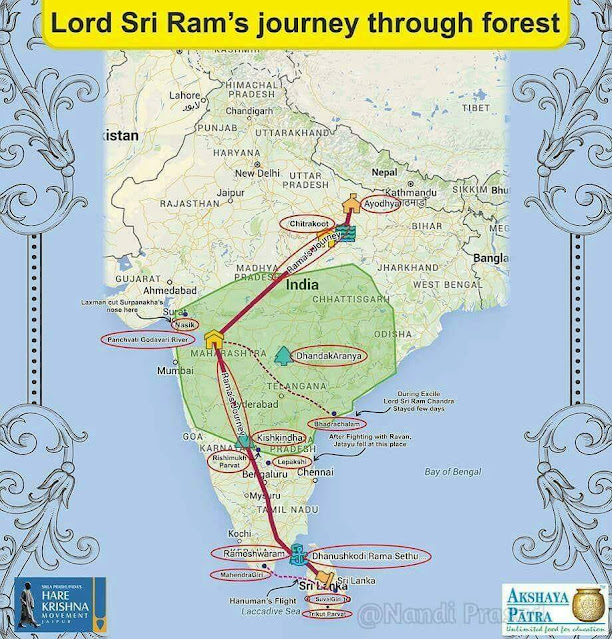






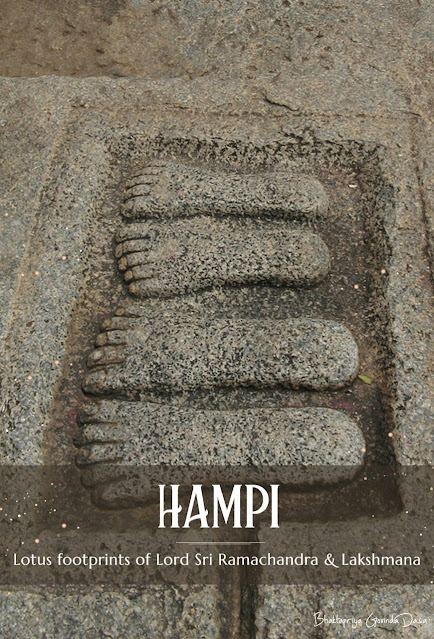

















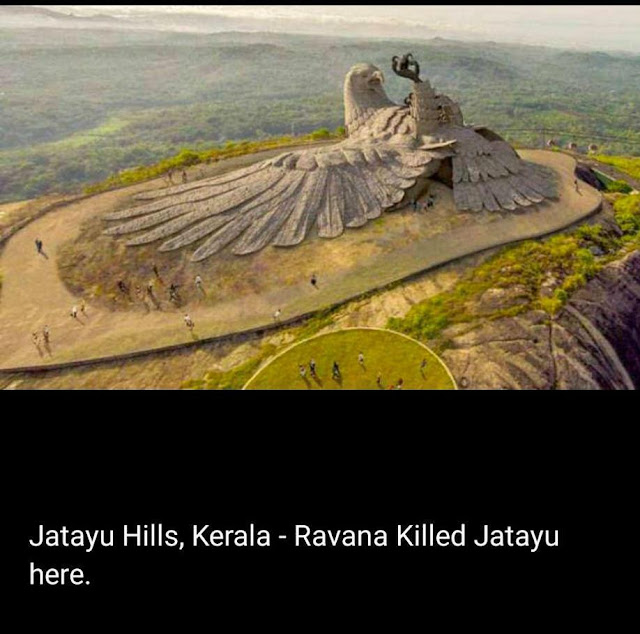




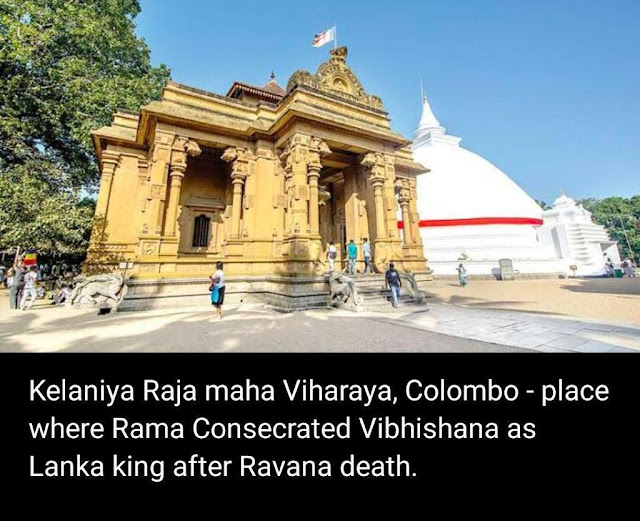

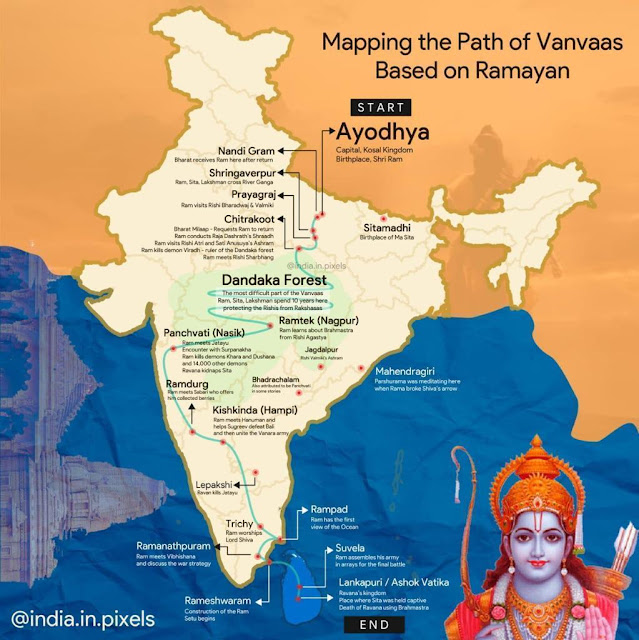

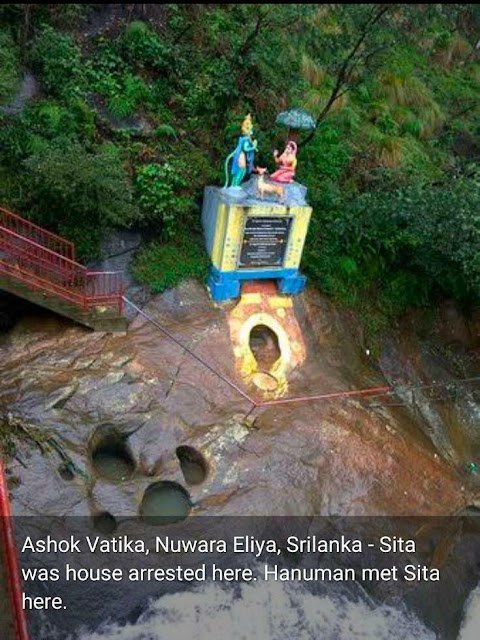

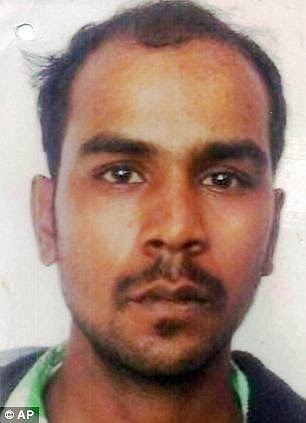

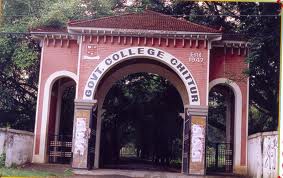
.jpg)




Comments
who are wishing in favor of blogging.
Feel free to visit my blog post - get the facts
Also visit my site ... more how to train golden retriever stuff
My webpage important link
Would you offer guest writers to write content to suit your needs?
I wouldn't mind publishing a post or elaborating on most of the subjects you write concerning here. Again, awesome weblog!
Here is my web-site: yellow lab golden retriever mix
on this post. I will be returning to your website for
more soon.
Also visit my webpage :: Our Website
well..
My site; recommended reading
found any fascinating article like yours. It is lovely
value sufficient for me. In my view, if all site owners and bloggers made
excellent content as you did, the net can be much more
helpful than ever before.
Here is my web site; terrific adopting golden retriever puppies facts
AOL? I require a specialist on this house to resolve my problem.
May be that's you! Having a look forward to look you.
Here is my page: Find Out More
info for me. And i'm satisfied reading your article. However wanna commentary on few general issues, The site taste is wonderful, the articles is in point of fact nice : D. Just right activity, cheers
Also visit my web-site mini golden retriever
that type of info written in such a perfect method?
I have a challenge that I'm simply now working on, and I have been at the look out for such information.
Check out my webpage - read more here
write again soon!
My blog :: visit this link
so he/she wants to be available that in detail, therefore that thing is maintained over here.
Also visit my homepage ... visit for cream golden retriever puppy details
shared this helpful info with us. Please keep us up to date like this.
Thank you for sharing.
My homepage more bonuses
Also visit my web page :: Look At This
That is the very first time I frequented your web page and to this point?
I amazed with the research you made to make this actual put
up extraordinary. Great task!
great deal more attention. I'll probably be back again to see more,
thanks for the info!
a leisure account it. Look complicated to far introduced agreeable from you!
By the way, how could we communicate?
Does operating a well-established website such as yours take a massive amount work?
I'm completely new to writing a blog however I do write in my journal on a daily basis.
I'd like to start a blog so I will be able to share my
own experience and feelings online. Please let me know if you have any suggestions or tips for brand new aspiring
blog owners. Appreciate it!
used to visit this blog everyday.
I'll just sum it up what I submitted and say, I'm
thoroughly enjoying your blog. I too am an aspiring blog blogger but I'm still new
to everything. Do you have any tips and hints for
first-time blog writers? I'd genuinely appreciate it.
check out your site on my iphone during lunch break.
I enjoy the knowledge you provide here and can't wait to take a look when I get home.
I'm surprised at how quick your blog loaded on my phone ..
I'm not even using WIFI, just 3G .. Anyhow, good site!
writer for your blog. You have some really
great posts and I think I would be a good asset.
If you ever want to take some of the load off, I'd absolutely love to write some articles for your blog in exchange for a link back to mine.
Please send me an e-mail if interested. Thank you!
hackers? I'm kinda paranoid about losing everything
I've worked hard on. Any suggestions?
donate to this superb blog! I guess for now i'll settle for bookmarking and adding your RSS feed to my
Google account. I look forward to brand new updates and will
talk about this website with my Facebook group.
Chat soon!
any interesting article like yours. It is pretty price enough
for me. In my view, if all site owners and bloggers made
just right content as you probably did, the internet
shall be much more helpful than ever before.
to “return the favor”.I'm trying to find things to enhance my site!I
suppose its ok to use a few of your ideas!!
I think you are confused with the dates.... Shri Ram was born as per this piece of information during 5114 BC (Before Christ)
It means approximately 7200 years ago...
Shri Krishna was born probably around 2500 BC (I. E approximately around 4600 years ago).